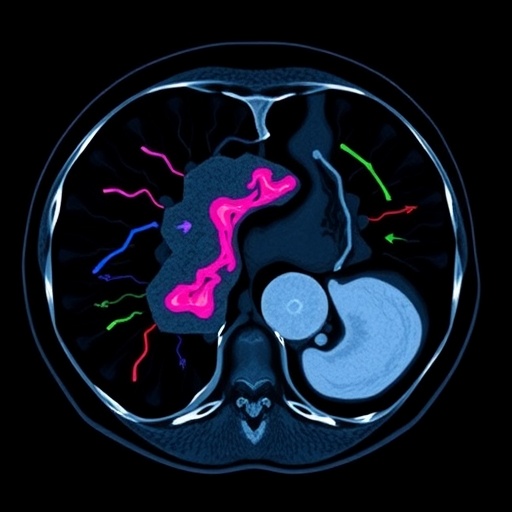
Recent research has illuminated a critical interplay between hormonal levels and reproductive outcomes, particularly focusing on estradiol levels in women undergoing hormone replacement therapy (HRT) in conjunction with frozen embryo transfer (FET). Estradiol, an estrogen steroid hormone, plays a pivotal role in regulating the menstrual cycle, maintaining pregnancy, and influencing reproductive events. In a systematic review and meta-analysis conducted by Tarafdari, Keikha, Ahmadi, and colleagues, the relationship between early-to-mid-luteal serum estradiol levels and the success rates of frozen embryo transfers was meticulously investigated, showcasing significant findings that hold important implications for fertility treatments.
Hormone replacement therapy has become a fundamental strategy for women experiencing fertility challenges, particularly when using frozen embryos. The administration of exogenous hormones, particularly estrogens such as estradiol, aims to synchronize the reproductive environment, maximizing the chances of successful implantation and pregnancy. The luteal phase, occurring after ovulation and before the start of menstruation, is of immense significance in this context. During this phase, the body prepares for a potential pregnancy, and hormone levels such as estradiol peak, signaling the endometrium for implantation. Understanding the timing and levels of these hormones can be crucial for optimizing reproductive therapies.
In their pivotal study, the researchers drew data from multiple studies to analyze the correlation between early-to-mid-luteal estradiol levels and the clinical outcomes of hormone replacement therapy in patients undergoing frozen embryo transfers. This expansive approach allowed them to gather a substantial pool of data, giving their findings robust statistical power. By systematically reviewing existing literature, they could identify trends and inconsistencies across different populations and treatment protocols.
The results revealed a nuanced relationship between estradiol levels and pregnancy outcomes. Patients with optimal serum estradiol levels during the early-to-mid-luteal phase were more likely to achieve successful implantation and pregnancy compared to those with lower levels of this crucial hormone. This discovery underscores the importance of tailored hormonal assessments in reproductive endocrinology, potentially guiding clinicians in making informed decisions around patient-specific treatment plans.
Furthermore, the review highlighted the consequences of aberrant estradiol levels, which could lead to suboptimal endometrial receptivity. Endometrial receptivity is vital for the successful implantation of an embryo and involves complex biochemical signaling pathways that are heavily influenced by circulating hormone levels. A deficiency or excess in estradiol can disrupt this delicate balance, diminishing the chances of a successful pregnancy. The evidence gathered in the study provides a compelling case for reproductive specialists to monitor and adjust estradiol levels effectively throughout the treatment process.
The implications of this research extend beyond mere clinical practice; they signal a potential shift in how fertility treatments are approached. By emphasizing the importance of serum estradiol monitoring, fertility clinics could develop more precise and personalized treatment regimens. This tailoring of therapy is particularly vital in the context of assisted reproductive technologies, where the window for successful embryo implantation is notoriously narrow and hinges upon numerous factors.
Placing these findings within the larger context of reproductive health research is essential. Hormonal fluctuations are not only indicative of reproductive success but can also reflect broader health issues. Conditions such as polycystic ovarian syndrome (PCOS), thyroid dysfunction, or obesity can affect hormone levels and, consequently, fertility. By linking estradiol to outcomes in HRT-FET, the researchers have opened a pathway for exploring how general reproductive and overall health can impact fertility treatments.
Another critical aspect of the meta-analysis is fostering a deeper understanding of the timing and dosages of estradiol administration during HRT protocols. Identifying the optimal window for estradiol levels to rise can lead clinicians to refine their treatment regimens. One of the key challenges in fertility treatments is ensuring that patients receive the correct hormonal balance without overshooting or undershooting necessary levels. The systematic analysis provides clarity regarding these optimal ranges and the precision needed in administering estradiol.
The nuances of this research indicate that the road to pregnancy can be complex, yet understanding estradiol’s role provides a beacon of hope. As HRT-FET becomes more prevalent, the importance of focusing on hormonal biomarkers will likely grow. By investing time and resources to monitor these indicators, fertility clinics could yield better patient outcomes and provide couples with more informed insights into their reproductive health.
The broader implications of this research touch upon health policy as well. In an era where personalized medicine is becoming increasingly prioritized, the integration of hormonal assessments into standard fertility treatment protocols could influence regulations around fertility services. Policymakers may need to consider guidelines that enforce the monitoring of serum estradiol levels to improve patient outcomes and ensure equitable access to state-of-the-art reproductive health technology.
Through this systematic review and meta-analysis, Tarafdari and colleagues have planted the seeds for future research endeavors. Their work serves as a vital reference point, potentially guiding subsequent studies that could explore additional hormones, other phases of the menstrual cycle, or varying patient demographics. It raises questions about how estradiol interacts with other hormones and how this interplay could be harnessed to improve reproductive outcomes further.
Ultimately, the findings not only enrich the existing literature surrounding hormone replacement therapy and frozen embryo transfer but also highlight the evolving landscape of reproductive health management. They remind us that as science progresses, our understanding of hormonal dynamics must adapt to incorporate both patient-centered and population-level approaches.
The study serves to arm healthcare providers with essential insights, enabling them to revolutionize current practices while paving the way for enriched future research. With ongoing developments in reproductive technology and hormonal therapy, the pathway to enhancing fertility outcomes becomes ever more illuminated, and understanding estradiol’s critical role will be a fundamental piece of this puzzle.
In conclusion, the association between early-to-mid-luteal serum estradiol levels and the outcomes of hormone replacement therapy-frozen embryo transfer underscores an essential dimension of reproductive medicine. The collective findings bolster the need for individualized treatment protocols, proactive hormonal monitoring, and a holistic approach to fertility care. These advancements promise not just to improve clinical outcomes, but to bring hope to countless individuals and families navigating the complexities of infertility.
Subject of Research: The association between early-to-mid-luteal serum estradiol levels and the outcomes of hormone replacement therapy-frozen embryo transfer.
Article Title: Association of Early-to-Mid-Luteal Serum Estradiol Levels with the Outcomes of Hormone Replacement Therapy-Frozen Embryo Transfer: A Systematic Review and Meta-Analysis.
Article References:
Tarafdari, A., Keikha, F., Ahmadi, S. et al. Association of Early-to-Mid-Luteal Serum Estradiol Levels with the Outcomes of Hormone Replacement Therapy-Frozen Embryo Transfer: A Systematic Review and Meta-Analysis. Reprod. Sci. (2025). https://doi.org/10.1007/s43032-025-01952-1
Image Credits: AI Generated
DOI: 10.1007/s43032-025-01952-1
Keywords: Estradiol, Hormone Replacement Therapy, Frozen Embryo Transfer, Reproductive Health, Fertility Treatments, Endometrial Receptivity.
Tags: estradiol levels and fertilityestradiol’s role in pregnancyexogenous hormones and implantation successfrozen embryo transfer outcomeshormonal synchronization in reproductive therapieshormone replacement therapy in womenhormone therapy success ratesluteal phase hormone regulationoptimizing fertility treatments with hormonesreproductive health and estradiolsignificant findings in reproductive endocrinologysystemic review of estradiol and fertility




